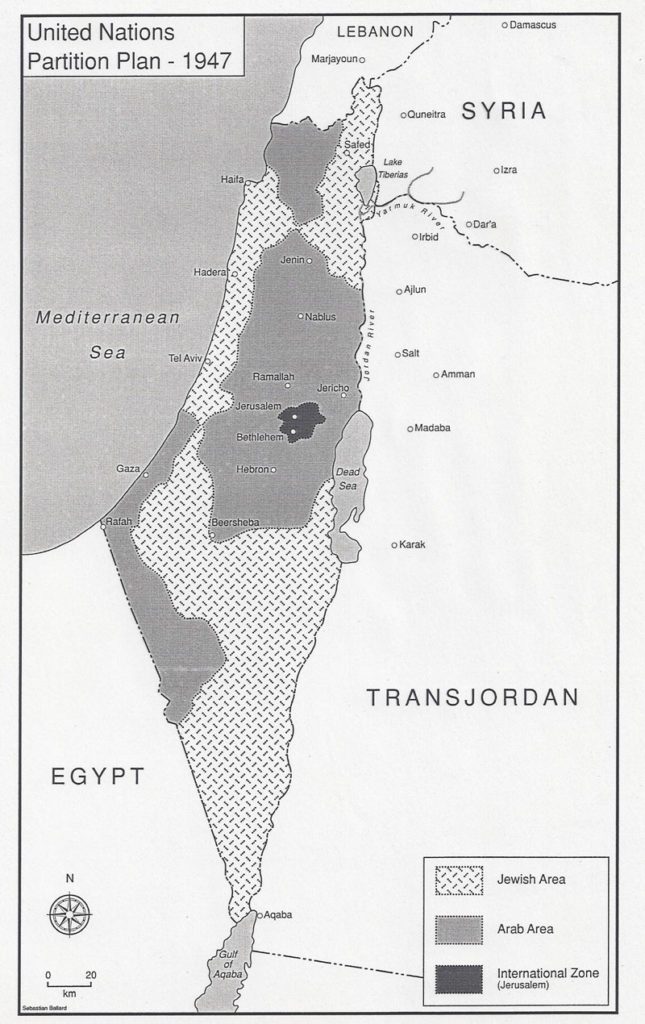
Ken Stein, Emeritus Professor, Emory University; President, Center for Israel Education
September 15, 2022
In telling or writing the history of a place or of a person, it matters chronologically where you begin as teacher. What you leave out matters. It reveals to the observer the strengths, prejudices, weaknesses, or preferences you are intentionally not conveying. If you begin to tell Israel’s history from only the days after the 1967 war, you have dispensed with the war’s causation. You omitted Arab state threats to destroy Israel, excluded the 1948 war, the Shoah, and League of Nations. You omitted Herzl, his Zionist precursors, failed Jewish emancipation and perhaps the origins of Jewish peoplehood. Maybe you made the conscious choice. Maybe all you care about as a teacher is resolving the Palestinian-Israeli conflict, or maybe you never studied history to teach it.
When you do not know a particular segment of history, even a small sliver of it, then you have little comfort in teaching it. Or if you report on it or teach it, the preference is to concentrate on what happened the day before yesterday. Far too often, some omit teaching or reporting the history or context so that they can teach a polemical view and give up all traces of objectivity.
May 2023 and Israel’s 75th year anniversary is approaching. In teaching Israel’s story, pending time constraints, I prefer to treat all periods of Israel’s history with equal value. However, my special pleading is not to omit any period in telling and learning Israel’s story but stress the critical importance of the 1947-1949 period. It will be seventy-five years since Palestine was transformed from a British Mandate to a Jewish state. That occurred because before the state was established Zionists linked people to land acquired. Zionists lobbied intensely to end Britain’s presence in Palestine, so that Palestine’s future could be decided by international legitimacy of member state voting at the newly established United Nations. Jews were a nation before Zionism, they built the infrastructure and generated the physical and demographic nucleus for a territorial state in the three quarter of century before May 1948. Israel did not magically appear because the devastation of European Jewry!
In these particularly important two years, 1947-1949, turning points unfolded. Each separately was important, but collectively they were critical. In February 1947, Britain turned the future of Palestine over to the United Nations; in May 1947, the Soviet Union noted by Foreign Minister Gromyko favored of a Jewish presence in Palestine to hasten the British out of the Middle East. Here was a case of a conveniently present ally, but not one you wanted to invite home to dinner. For political context, the British succinctly summarized their administration of a quarter century in Palestine, particularly detailing how both communities grew irreconcilably apart since WWI. In August the United Nations Special Committee on Palestine decided to present the idea that Palestine should evolve into an Arab and Jewish State, with an economic union between them, and Jerusalem separately governed. In September, the Arab League Secretary General, Azzam Pasha in a London Hotel refused to accept the overture of three Zionists for a compromise with the Arabs in Palestine. He said, “we may lose Palestine, but war is the only way to settle our differences.” Lets be certain when we teach about the 1947-1949 period we are sure to include Arab rejection of the private Zionist overture, and the public overture of rejecting an Arab state in the November 29, 1947 UN Recommendation to create Arab and Jewish states in Palestine.
The Arab states rejected two states, the Zionists accepted the idea and the UN voted in favor 33-13 and ten abstentions, passing with the required two-thirds majority. In terms of who was taking sides at the end of 1947 and early 1948, we should include in our presentation remarks the hard reality that many US Government officials were totally opposed to a Jewish state in Palestine, fearing alienation of the oil producing countries, and admitting too that some harbored deep anti-Semitic feelings. Israel’s establishment came on May 15, 1948, and with it, Israel’s Declaration of Independence.
The 1947-1949 Arab-Israeli War ended without treaties, only Armistice Agreements between Israel and her contiguous Arab neighbors. Israel was admitted into the United Nations in February 1949. The UN suggested that Palestinian refugee adjudication should likewise take place, if the sides were to live in peace, but that did not occur because the war between Israel and the Arab sides did not conclude with mutual recognition.

For further reading on 1945-1949, you might consult:
David Horowitz, State in the Making, Knopf, 1953.
Eliyahu Epstein, Zionism at the UN diary of the first days, Jewish Publication Society, 1976.
Herbert Evett, Task of Nations, Greenwood, 1949.
Yoav Gelber, Palestine 1948 War Escape and the Emergence of the Palestinian Refugee Problem, Sussex, 2008.
Jorge Garcia Granados, The Birth of Israel, Knopf, 1949.
Jon and David Kimche, Both Sides of the Hill, Secker and Warburg, 1960.
James G. McDonald, My Mission in Israel, 1948-1951, Simon and Schuster, 1951.
Benny Morris, 1948, The First Arab-Israeli War, Yale, 2008.
Zeev Sharef, Three Days, Allen, 1962.
Musa Alami, “The Lesson of Palestine,” 1948.
“Reasoned Views for the dysfunctional state of the Palestine Arab’s Political state of affairs,” 1945-1949, Center for Israel Education.
Yaacov Shimoni, “The Arabs and the Approaching War with Israel, 1945-1948.”
Ken Stein, “The Arab-Israeli War of 1948 – A Short History,” Center for Israel Education

Ken Stein, 9.15.2022
